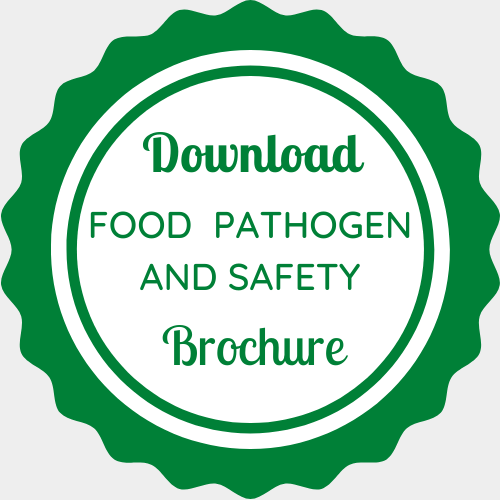Day 1 :
Keynote Forum
Waraporn Kusalaruk
Hiroshima University, Japan
Keynote: Antimicrobial activity of ethanolic plant extracts alone and in combination with glycine and sodium acetate against Escherichia coli
Time : 04:00 PM

Biography:
Dr. Waraporn Kusalaruk is currently working in Laboratory of Food Microbiology and Hygiene, Department of Biofunctional Science and Technology, Graduate School of Biosphere Science, Hiroshima University, Hiroshima, Japan.
Abstract:
Escherichia coli O157:H7 is a major foodborne pathogen, which causes severe human infections. Plant extracts, glycine, and sodium acetate (NaOAc) exert antimicrobial effects that can be used to control pathogenic E. coli. However, their combinations have not been investigated before. Thus, this study aimed to investigate the combined effect of ethanolic plant extracts with glycine and NaOAc against E. coli at various pHs and temperatures. Twenty-two plant extract samples were screened by disk diffusion method. Only clove and rosemary extracts exhibited significant antimicrobial activity against pathogenic and non-pathogenic E. coli with inhibition zones 12.25 to 17.25 mm and 11.25 to 12.00 mm, respectively. Clove extract inhibited the growth of E. coli with bactericidal manner with both minimum inhibitory concentration (MIC) and minimum bactericidal concentration (MBC) of 0.4%, while MIC and MBC of rosemary extract were 0.6% and 0.8%, respectively. Clove extract (0.2%) at neutral condition with 0.1% NaOAc or 1.0% glycine showed additive effect with fractional inhibitory concentration (FIC) index 0.53 and 0.75, respectively. At pH 5.5, 0.2% rosemary or 0.1% clove extract supplemented with 0.1% NaOAc showed additive interaction with FIC indices 0.53 and 0.70, respectively. The population of E. coli O157:H7 in phosphate-buffered saline (PBS) with 0.2% clove extract, 2% glycine, and 2% NaOAc showed more than 5 log reduction after incubation at 15 °C for 96 h, while the combination of 0.1% clove extract and 2% NaOAc at pH 5.5 completely inhibited E. coli within 24 h at 35 °C. Thus, the combination of plant extracts with glycine and NaOAc could serve as a promising hurdle technology in controlling the growth of E. coli and could be applied to food preservation.
Keynote Forum
Dr. Hany Gouda
Helwan University, Cairo, Egypt
Keynote: APPLICATION OF FOOD PRESERVATIVES IN FOOD PRODUCTS
Time : 04:30 PM

Biography:
Abstract:
Food preservatives such as NaNO2, which are widely used in human food products, undoubtedly affect, to some extent, human organs and health. For this reason, there is a need to reduce the hazards of these chemical preservatives, by replacing them with safe natural bio preservatives, or adding them to synthetic ones, which provides synergistic and additive effects.
The Citrus genus provides a rich source of such bio-preservatives, in addition to the availability of the genus and the low price of citrus fruit crops. In this study, we identify the most abundant flavonoids in citrus fruits (hesperidin) from the polar extract of mandarin peels (agro-waste) by using spectroscopic techniques, as well as limonene from the non-polar portion using GC techniques. Then, we explore the synergistic and additive effects of hesperidin from total mandarin extract with widely used NaNO2 to create a chemical preservative in food products. The results are promising and show a significant synergistic and additive activity. The combination of mandarin peel extract with NaNO2 had synergistic antibacterial activity against B. cereus, Staph. aureus, E. coli, and P. aeruginosa, while hesperidin showed a synergistic effect against B. cereus and P. aeruginosa and an additive effect against Staph. aureus and E. coli. These results refer to the ability of reducing the concentration of NaNO2 and replacing it with a safe natural bio-preservative such as hesperidin from total mandarin extract. Moreover, this led to gaining benefits from their biological and nutritive values.
Keynote Forum
Seyed Hadi Razavi
University of Tehran, Karaj, Iran.
Keynote: Germination and Fermentation of Soybeans: Two Healthy Steps to Release Angiotensin Converting Enzyme Inhibitory Activity Compounds
Time : 04:30 PM

Biography:
Dr. Seyed Hadi Razavi is currently working in Bioprocess Engineering Laboratory (BPEL), Department of Food Science, Engineering and Technology, Faculty of Agricultural Engineering and Technology, University of Tehran, Karaj, Iran.
Abstract:
Soybean is one of the most important grains with high proteins, good quality edible oils, appreciable amount of minerals and vitamins. Due to some disadvantages soybeans’ compounds affecting the flavour, odour and stability, different types and levels of processing are considered to make better products with healthy properties. Hypertension (high blood pressure) is one of the modern world diseases, which increases the risk of serious human health problems. There are several systems in humans’ body e.g. angiotensin converting enzyme regulator to blood pressure control. The aim of the present review is to report the effect of germination and fermentation on the concentration of bioactive compounds with angiotensin converting enzyme inhibitory properties.

